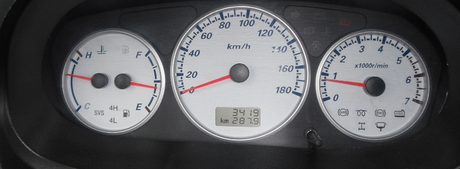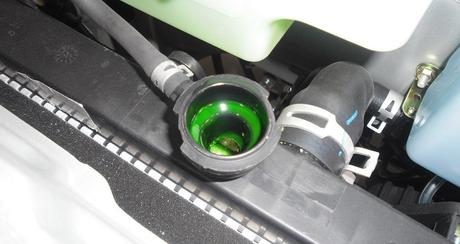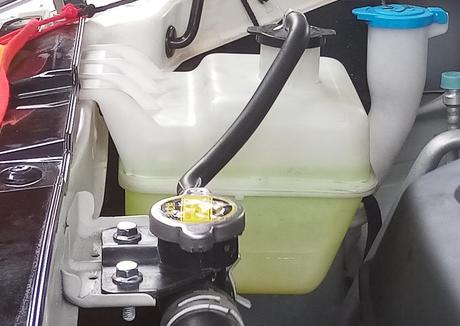
One common cause of the overheating problem is a lack of engine coolant. So, the first thing to do is to check the coolant level.
First, open the hood of this vehicle and remove the radiator cap. Only do this when the engine is cold. otherwise, you may burn yourself. Next, look down into the radiator fill hole and check the coolant level (use a flashlight if necessary). The coolant should sufficiently cover the little metal "fins" inside the radiator. If this is not the case, the coolant level is low. On most vehicles, you can also check the coolant level simply by inspecting the coolant recovery tank. Refer to this vehicle's owner's manual regarding this approach.
If the coolant level is low, the lack of coolant is causing the overheating problem.
Obviously, an engine's cooling system must have the right amount of coolant to work efficiently. Since the coolant level is low (as you indicated), this (likely) is the main cause of this problem (the other possibility is a clogged radiator). We are guessing that the coolant level is only slightly low. Why? Because the temperature gauge reads hot ONLY in hot weather. On the other hand, if the coolant was extremely low, the temperature gauge would read hot regardless of what the outside temperature was (unless of course, it was very, very cold outside).
What to do?
Using a clean, empty container, make a 50/50 mix of water and anti-freeze (any auto parts store will carry anti-freeze). Then, when the engine is cold (say, in the morning), remove the radiator cap and pour just enough fluid to sufficiently cover the little "fins" inside the radiator. Replace the cap when done. How did the coolant level become low? Has the radiator boiled over once or twice in the past? This would account for it.

Alternatively, maybe there is a leak somewhere in the cooling system. Have you ever noticed a puddle of coolant underneath this vehicle? If no, maybe it's an internal leak. like that which results from a blown head gasket. If this is the case, white smoke will come out of the exhaust as you're driving. This is caused by coolant leaking into the engine's combustion chambers and burning off as steam. Whatever the case, please have this vehicle checked out by a mechanic.
If the car is Overheating with full coolant, meaning the coolant level is not low, the possible problem is clogged or the radiator is plugged.

Let's examine this situation closely. First, if the temperature gauge reads hot in hot weather. That's not such a big deal. especially in stop-and-go traffic. But, the gauge should go down as soon as the vehicle speeds up. However, that's not the case here because of the "at any speed" part which implies that the gauge doesn't go down (or at least doesn't go down much) when the vehicle speeds up. This is the crux of the problem. There are really only two things that can cause this.
The first is that the coolant level may be a little low. However, this was ruled out. The other thing is that the radiator is clogged/plugged up and therefore, even when you drive fast, the air that "hits" the radiator isn't cooling the coolant. Put another way, a radiator is most effective in cooling the coolant (and thus the engine) when the vehicle is going fast. Since the temperature gauge reads hot "at any speed", the radiator must not be working well.
What to do?
First, clean any bugs, debris off the face of the radiator with hot water and a soft brush. Next, have the entire cooling system backflushed. This is a procedure in which water is run through the cooling system in the opposite direction of normal coolant flow. This will remove much of the rust and particle buildup, restoring the efficiency of the radiator as well as other parts of the cooling system. You can do a backflush yourself quite simply. Any auto parts store will carry a backflush kit.
How to Clean Radiator with DebrisWant more videos? Subscribe to Cartech Home channel
Want more videos? Subscribe to Cartech Home channel
